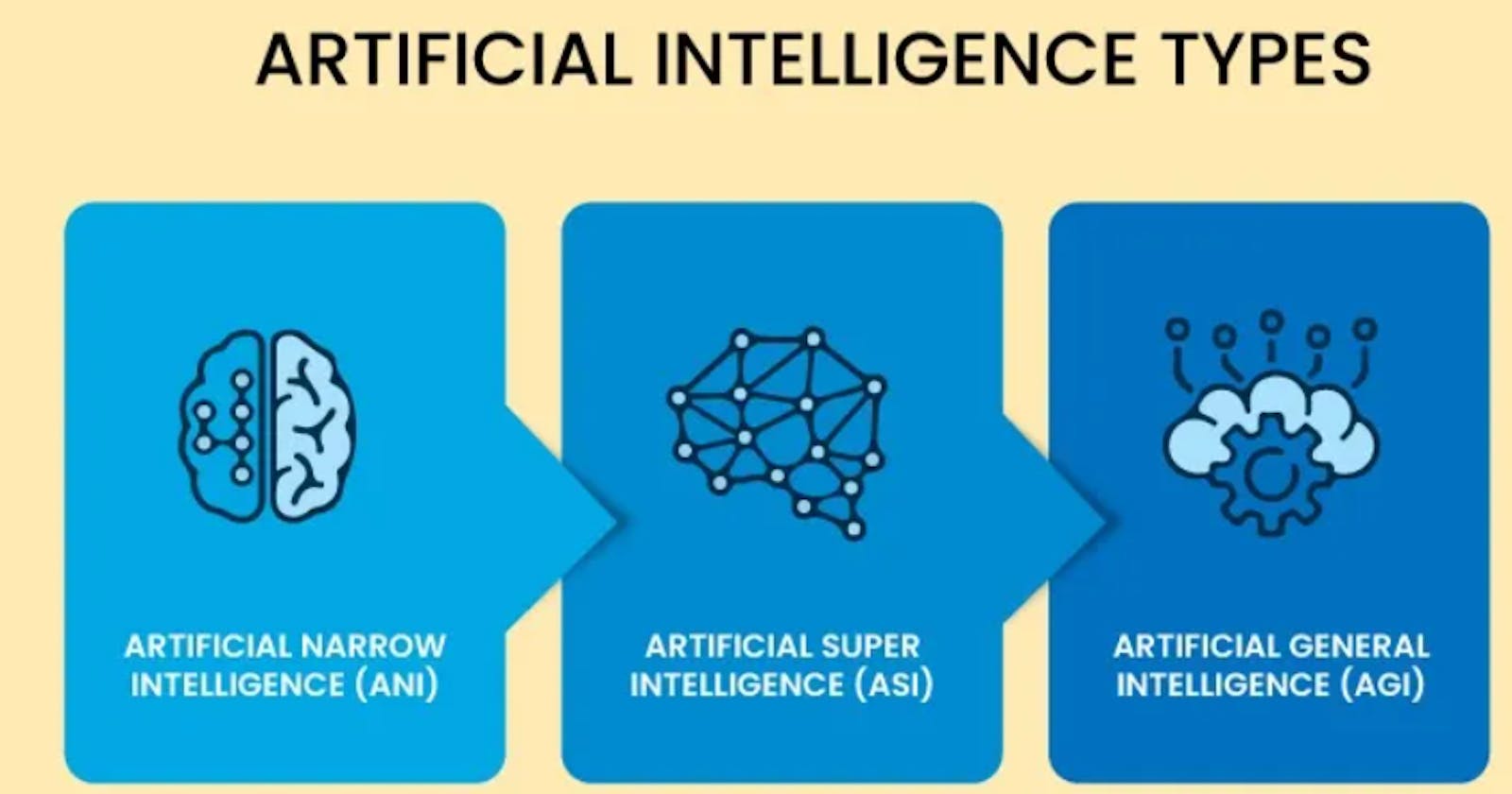Table of contents
Welcome back to the AI series! In this blog, we will be discussing the different types of artificial intelligence (AI). AI has been categorized into three types: Narrow or Weak AI, General or Strong AI, and Super AI. Each type has its unique features and characteristics, which we will explore in detail. By the end of this blog, you will have a clear understanding of the different types of AI and their applications. So let's dive in!
Narrow or Weak AI
Narrow or Weak AI is designed to perform a specific task. This type of AI is the most common form of AI that we encounter in our daily lives. It is used in various industries such as healthcare, finance, transportation, and entertainment. Examples of narrow AI include facial recognition, speech recognition, language translation, recommendation systems, and chatbots.

One of the most popular examples of narrow AI is Siri, the virtual assistant used in Apple devices. Siri is designed to recognize speech and respond to user queries. Another example is Amazon's Alexa, which is used to control smart home devices, play music, and answer questions.
General or Strong AI
General or Strong AI is capable of performing any intellectual task that a human can do. This type of AI can reason, learn, and understand the world in the same way as humans. However, General AI is still in the early stages of development, and researchers are working towards creating an AI that can think and reason like a human.

One of the key challenges of General AI is creating an AI that can understand context and meaning. While machines can recognize patterns and make predictions, they cannot still understand the nuances of human language and behaviour.
Super AI
Super AI, also known as Artificial General Intelligence (AGI), is a hypothetical type of AI that surpasses human intelligence in every way. This type of AI would be capable of performing any intellectual task with ease, and could potentially solve some of the world's most complex problems.

Super AI is still a distant possibility, and there is no clear roadmap for its development. While some researchers believe that it is achievable in the future, others warn about the risks associated with creating a super-intelligent machine.
In conclusion, AI can be categorized into three types: Narrow or Weak AI, General or Strong AI, and Super AI. Each type has its unique features and characteristics and is suited for different applications. While Narrow AI is the most common form of AI that we encounter in our daily lives, General AI and Super AI are still in the early stages of development. As AI continues to evolve, it will play an increasingly important role in shaping our future.
Thank you for taking the time to read this blog on the different types of artificial intelligence. I hope that you found it informative and insightful. Stay tuned for the next blog in the AI series, where we will be discussing the different components of AI, such as Machine Learning, Natural Language Processing, and Robotics.

